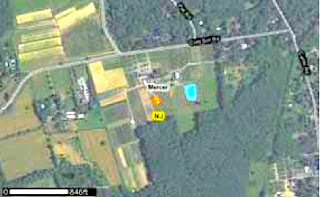Part 7 of Preparing Your Farm Food Safety Plan
-Meredith Melendez and Wes Kline
The USDA Good Agricultural Practices Third Party Audit requires that certain activities on the farm be documented. These logs should accurately reflect what you have done on the farm to ensure food safety. If you do not write your activities down, the auditor will assume that the activity never happened. This documentation may be new for many growers, so making it as easy as possible for you to comply will ensure that the documenting happens in a manner that is acceptable to an auditor.
Remember you may not need a third party audit; it depends on who is purchasing your produce. However, everyone should have a food safety plan.
What packinghouse logs will you need to have as a part of your farm food safety plan? [Read more…]
 Hand drawn maps are acceptable for an audit, but if you want a computer generated map, or an aerial image, there are several free resources that you can use. The easiest to use is the “My Maps” section of
Hand drawn maps are acceptable for an audit, but if you want a computer generated map, or an aerial image, there are several free resources that you can use. The easiest to use is the “My Maps” section of 